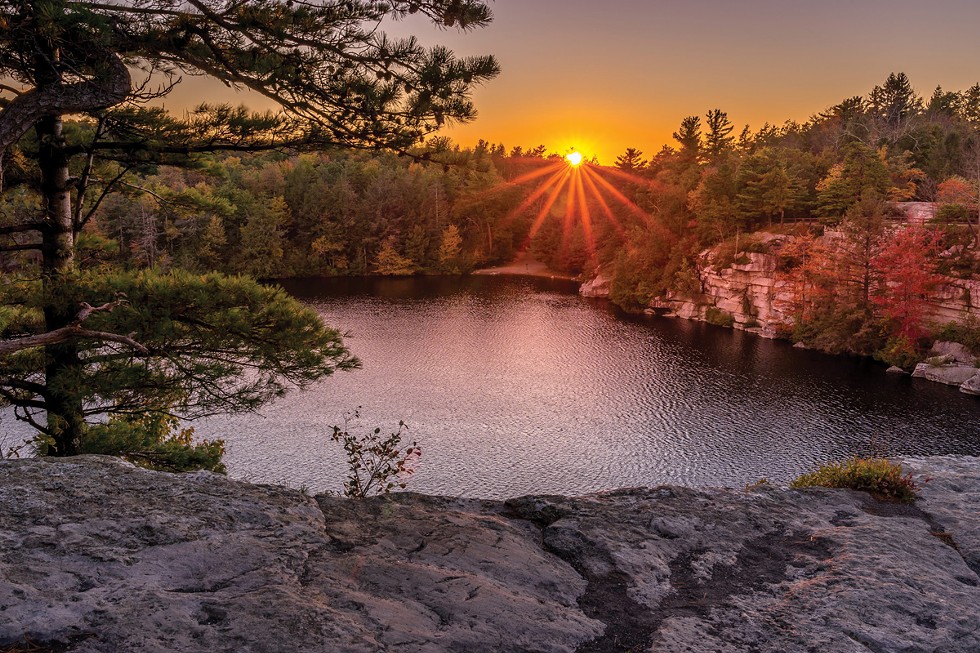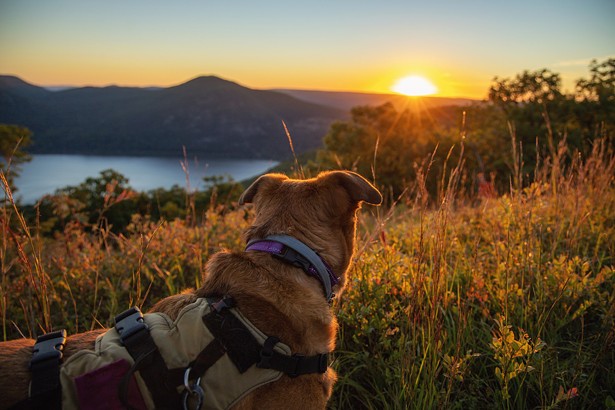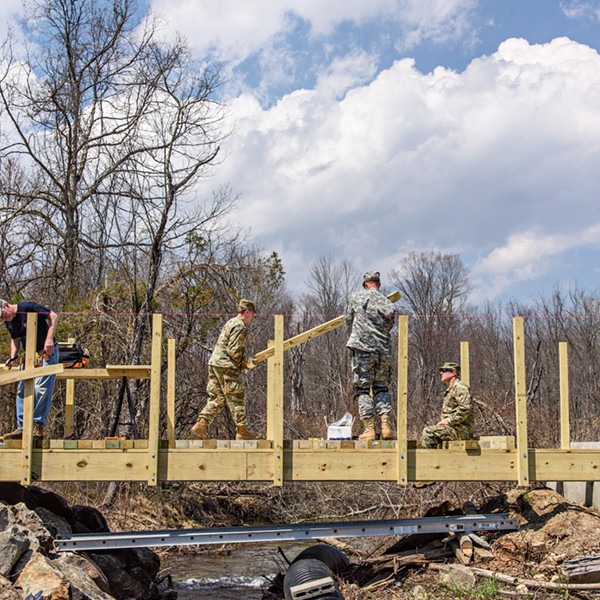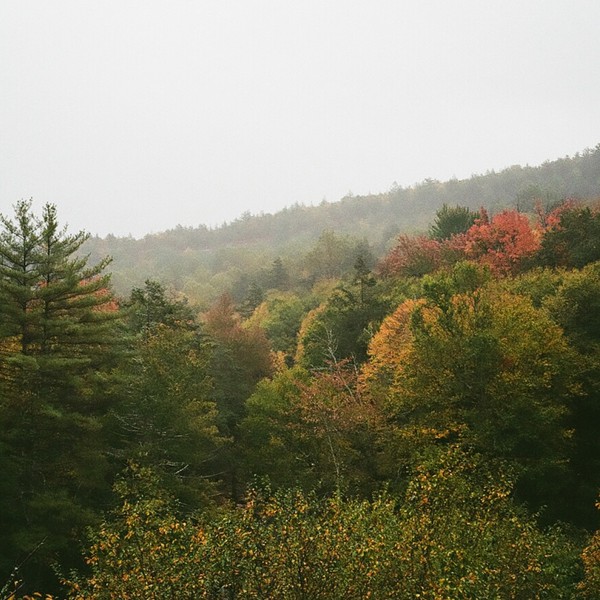A century means very little to nature. The path for Niagara Falls' rushing waters was carved by a glacier more than 10,000 years ago. The Hudson has snaked through its river valley since as long as 20,000 years ago. The Palisades were formed by magma and sandstone, cooled and eroded to sheer cliff faces, over 200 million years.
But a century in politics means a lot. This year marks the centennial anniversary of the New York State Office of Parks, Recreation, and Historic Preservation (OPRHP), which maintains, creates, and expands the state's 180 parks, including those natural sites. "We're celebrating the structure of a group of advisors who have the best interest of this open land at heart," says Randy Simons, the Commissioner Pro Tempore and Chief of Staff of OPRHP. "It's a recognition that it was our predecessors who said, 'We have to organize this. We have to ensure that these lands are managed properly.'"
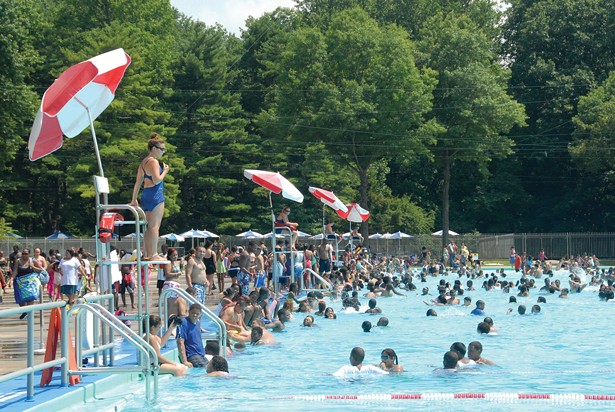
The milestone is a chance to reflect on the history of the modern state parks system, which arose out of a patchwork of purchased and donated natural preserves and historic sites. But some of the lands that make up the most iconic parks in the state came under government protection before Governor Alfred E. Smith signed the 1924 law that created the New York State Council of Parks.
Niagara Falls, for example, was one of the most important early conservationist projects in the United States. It came under government management in 1885 with the creation of the Niagara Reservation—New York's first state park and one of the first state parks in the country.
The Legacy of Niagara
Much of the motivation to create the reservation came from public advocacy, as industrial development crept closer to the falls, which were a valuable source of hydroelectric power. The desire to block this and preserve the falls' appeal for residents and tourists was driven by cultural fascination with the falls, demonstrated by the popularity of Niagara (1857), the painting by Hudson River School artist Frederic Church.
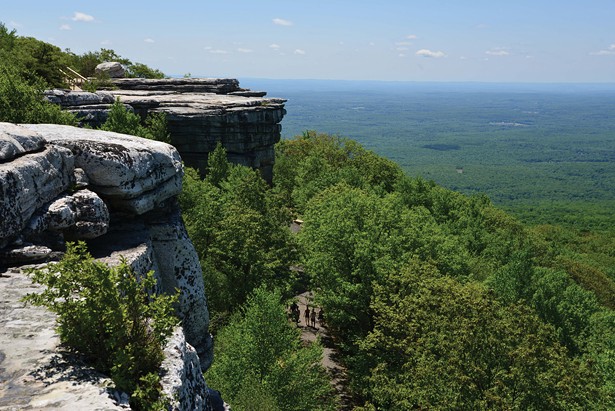
The work at Niagara set off an explosion of public-driven preservation efforts, championed by some of New York's richest families, like the Rockefellers and the Letchworths. Industrialist William Pryor Letchworth personally purchased and preserved much of the land that makes up today's Letchworth State Park in western New York, which was voted the nation's best state park in 2015.
Today, OPRHP's 180-park network includes many locations in the Hudson Valley, like the iconic Washington's Headquarters in Newburgh, where Washington commanded the Continental Army in the last year of the Revolutionary War. New York State took control of the property in 1850, making it the first property of any kind purchased by any arm of the US government for historic preservation.
Other OPRHP properties in the Hudson Valley include the Lake Taghkanic State Park, Minnewaska State Park, Harriman State Park, the Rockefeller State Park Preserve, and the Walkway Over the Hudson.

In some sense, their creation all stemmed from early conservation efforts, such as the establishment of the Palisades Interstate Park Commission, founded in 1900 by then-New York Governor Theodore Roosevelt, providing a model for the administration of open spaces.
Similar to the Niagara Falls, quarrying threatened the Palisades. So officials from New York and New Jersey purchased over 14 miles of river shoreline to create 30,000 acres of parks like Harriman and Bear Mountain to improve the lives of city dwellers through an accessible slice of nature.
"When you look at New York state parks and historic sites, we really were the template for what the federal structure is today," says Simons. That template saw millions of dollars of public funds directed to the purchasing and expansion of public lands, following Progressive Era political ideals, like the public spending push of FDR's New Deal.
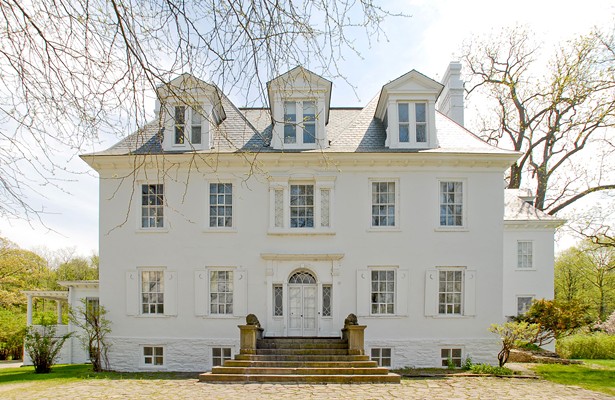
Robert Moses, a towering figure in state parks' legacy, controlled much of this spending as he took leadership roles in the early parks agency. After helping draft the law to establish the state parks council, Moses ran the Long Island parks council, where he put the beaches in the Robert Moses State Park under its stewardship.
Moses ascended to higher ranks in New York State government, growing powerful as he expanded the reach of the parks council to construct parkways, such as the Taconic Parkway, some of the region's earliest highways.
But as officials turned away from car-centric infrastructure out of environmental concerns and attempts to make parks accessible to people without cars, Moses' legacy remains a reminder of how government priorities change. For instance, at Niagara Falls, the Niagara Scenic Parkway, known as Robert Moses State Parkway until 2016, has been significantly downsized.
"Our system as it was built is not necessarily the way it should be maintained today," says Simons. "I like to think that our predecessors are sort of proud of what we're doing today."
That change is exemplified in the Hudson Valley, where the Sojourner Truth State Park in the City of Kingston opened on Earth Day in 2022. It provides a model for how officials are bringing a new set of public priorities into OPRHP's work.
To make the park a reality, OPRHP worked with Hudson Valley environmental nonprofit Scenic Hudson, which maintains 60 parks and nature preserves in the region. The group had been trying to preserve the area where Sojourner Truth State Park now stands since the 1990s, when a developer first proposed to build 2,500 luxury housing units on the site of an old quarry that had been abandoned since the 1980s. "It would've been out of keeping with the natural grandeur of the Hudson Valley," says Seth McKee, the executive director of the Scenic Hudson Land Trust.
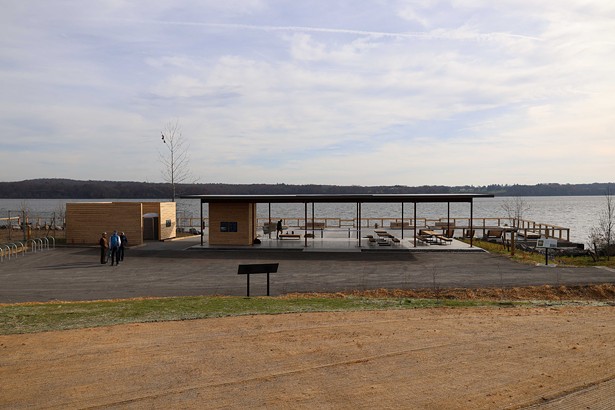
After plans for the development were scrapped following the 2008 financial crisis, Scenic Hudson was able to purchase the site in 2019 with the goal of turning it into a park. Since the nonprofit has worked with OPRHP for over 40 years, the two partnered to renovate the park, constructing a new parking lot and trails to a lookout, removing crumbling concrete silos, and fleshing out a waterfront area with seating and a shaded pavilion. "These public-private partnerships are really vital," says McKee. "If the nonprofit sector can step in and help, that is ultimately really good."
The partnership that created Sojourner Truth State Park echoes many of the early goals of the state parks program—improving the lives of city residents, preserving open spaces, and preventing excessive development. And with the new Empire State Trail, a trail stretching from New York City to Buffalo opened in 2020, running through the park, it presents a vision of a future for OPRHP, which according to Simons, aims to create a "necklace of parks" that are accessible for residents across the state.
"Parks are the great unifier," says Simons. "They have a little something for everybody. They're an extension of everybody's backyard."







